

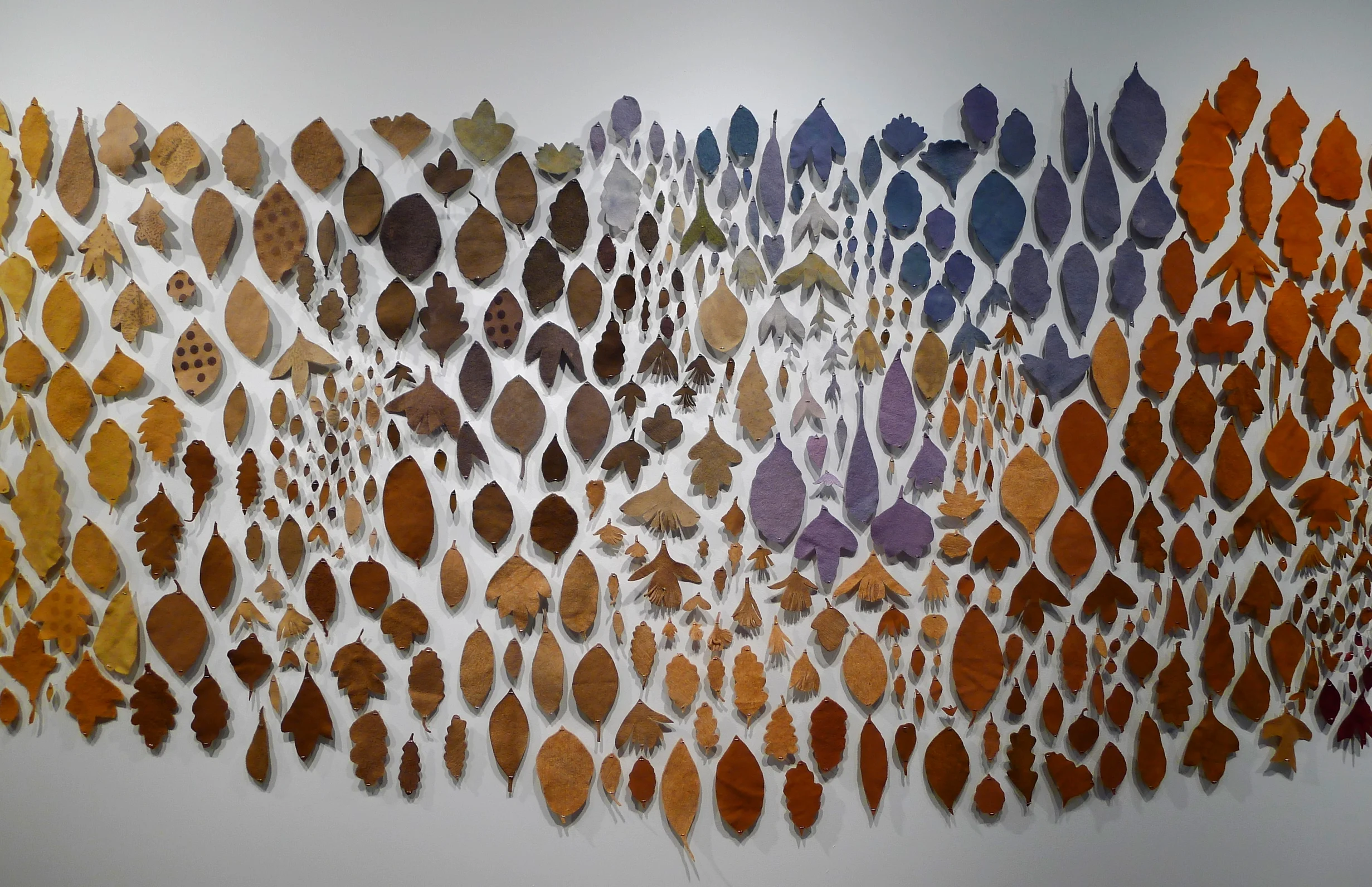




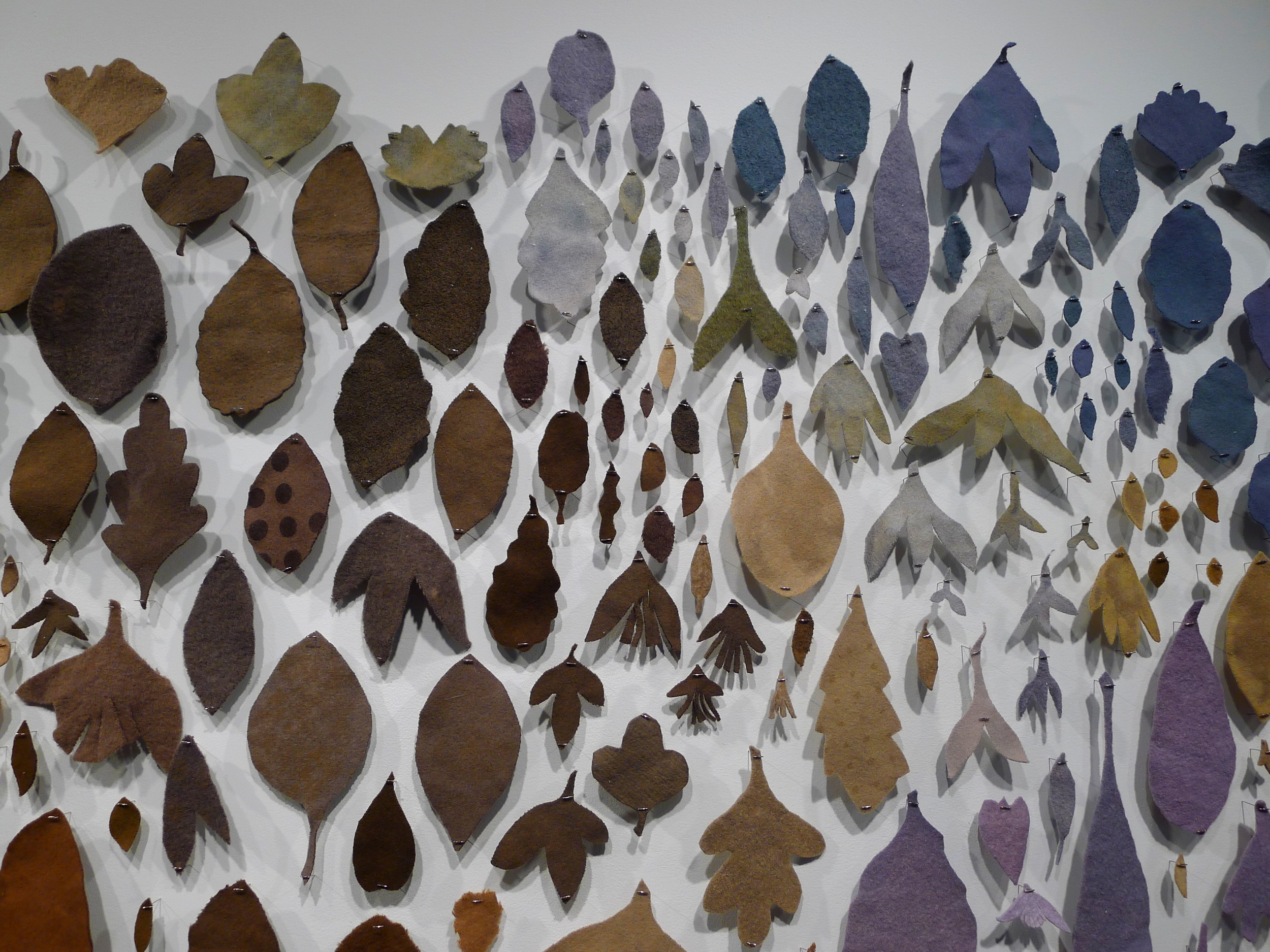


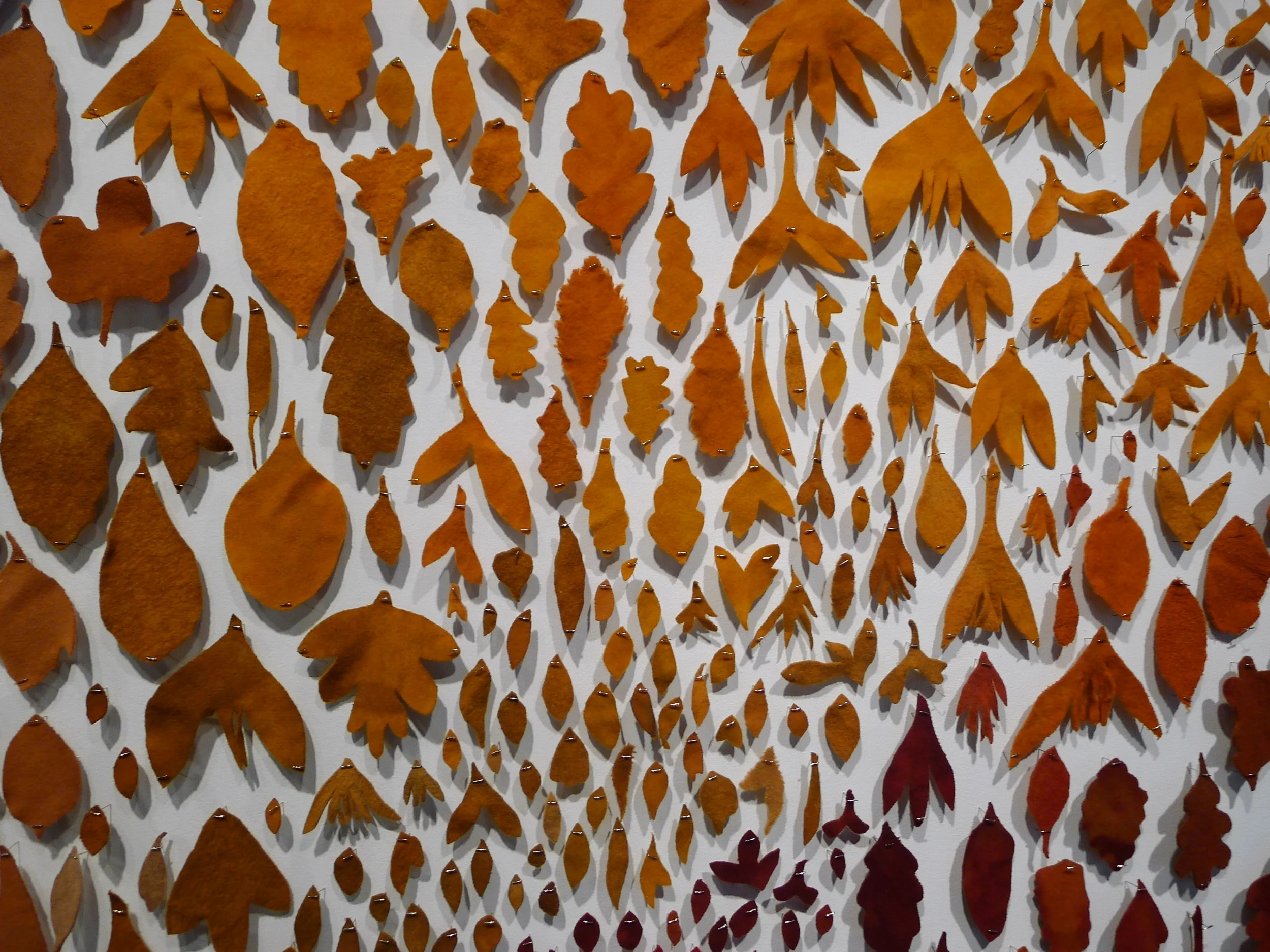

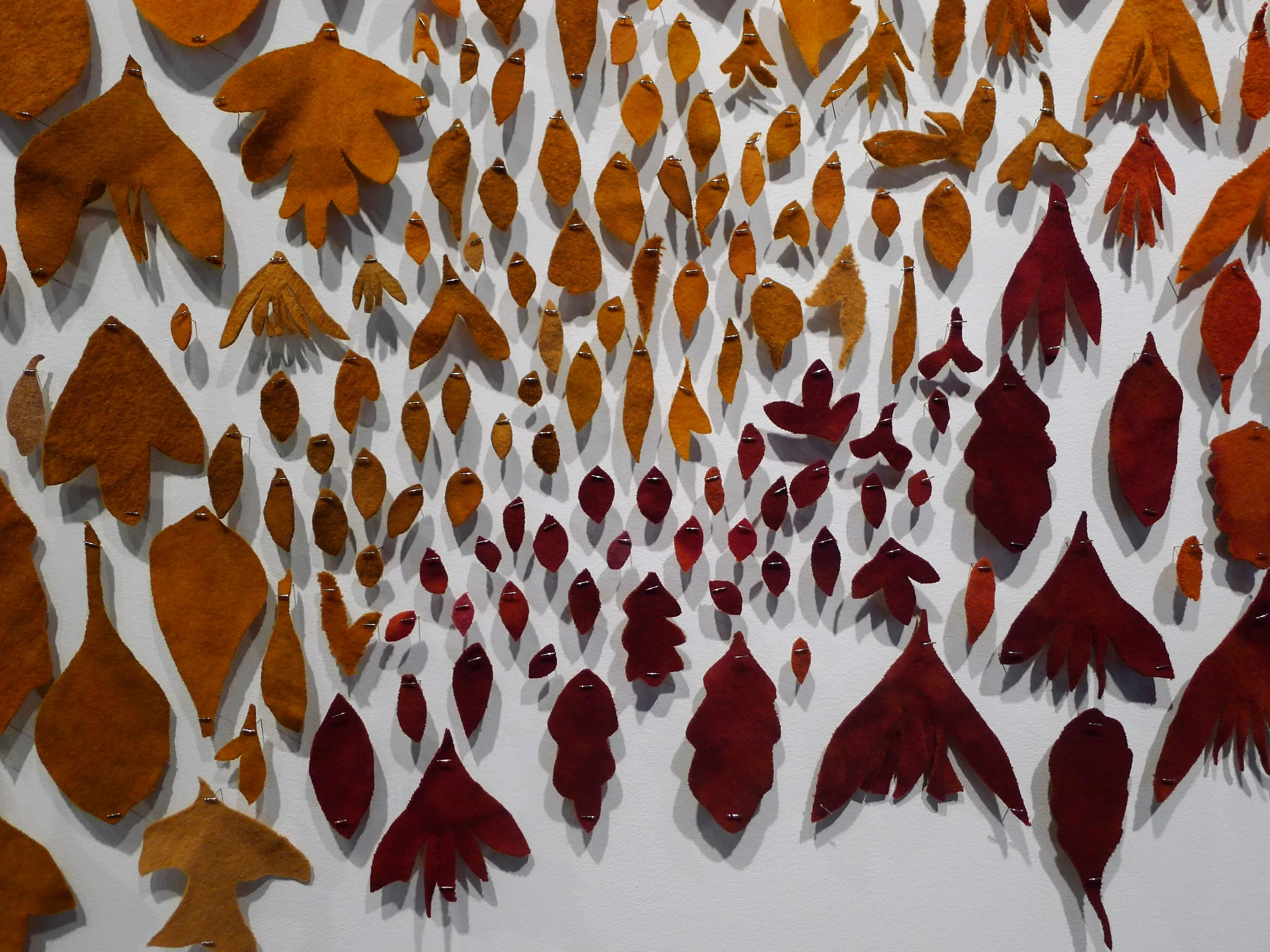

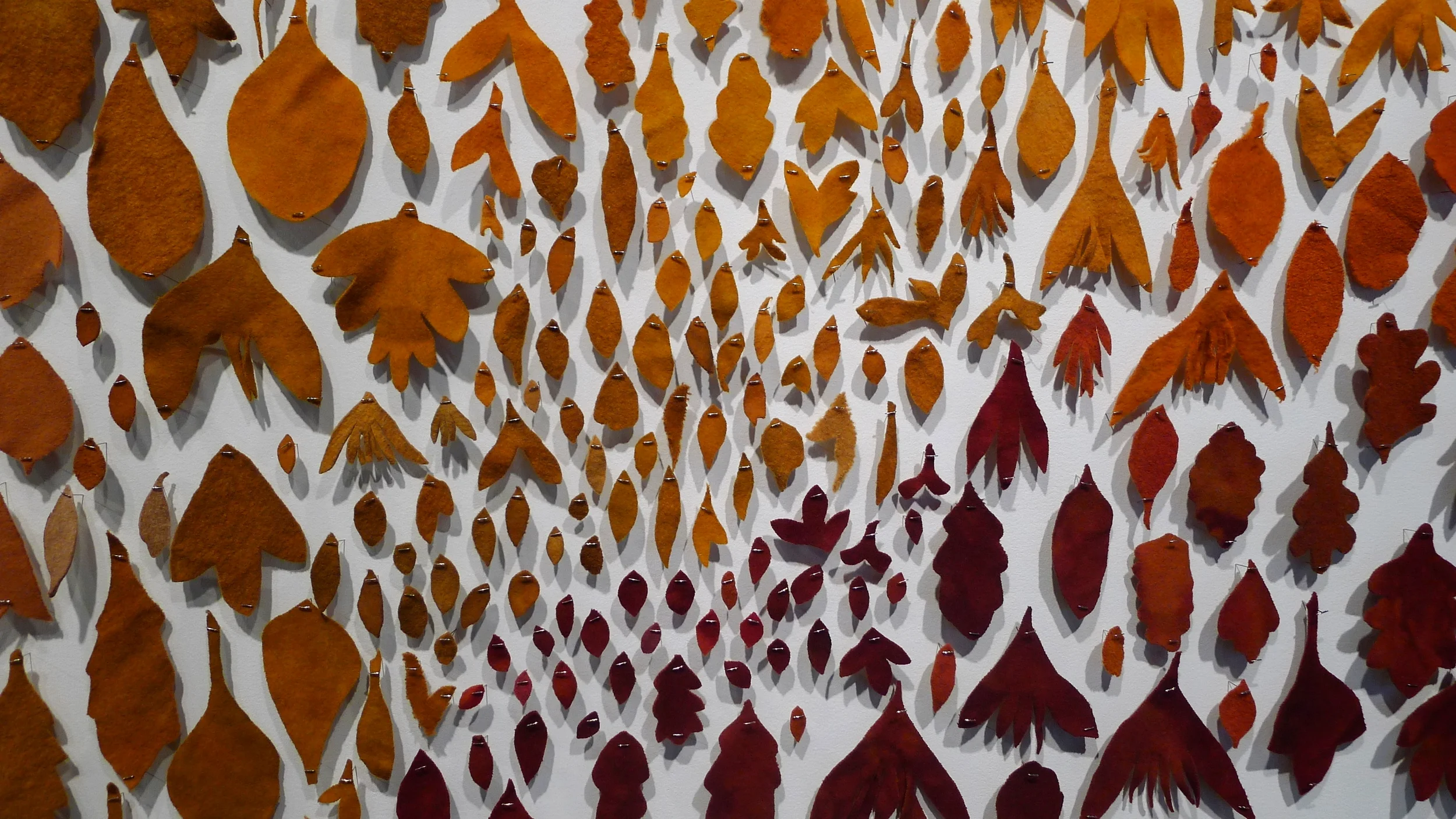
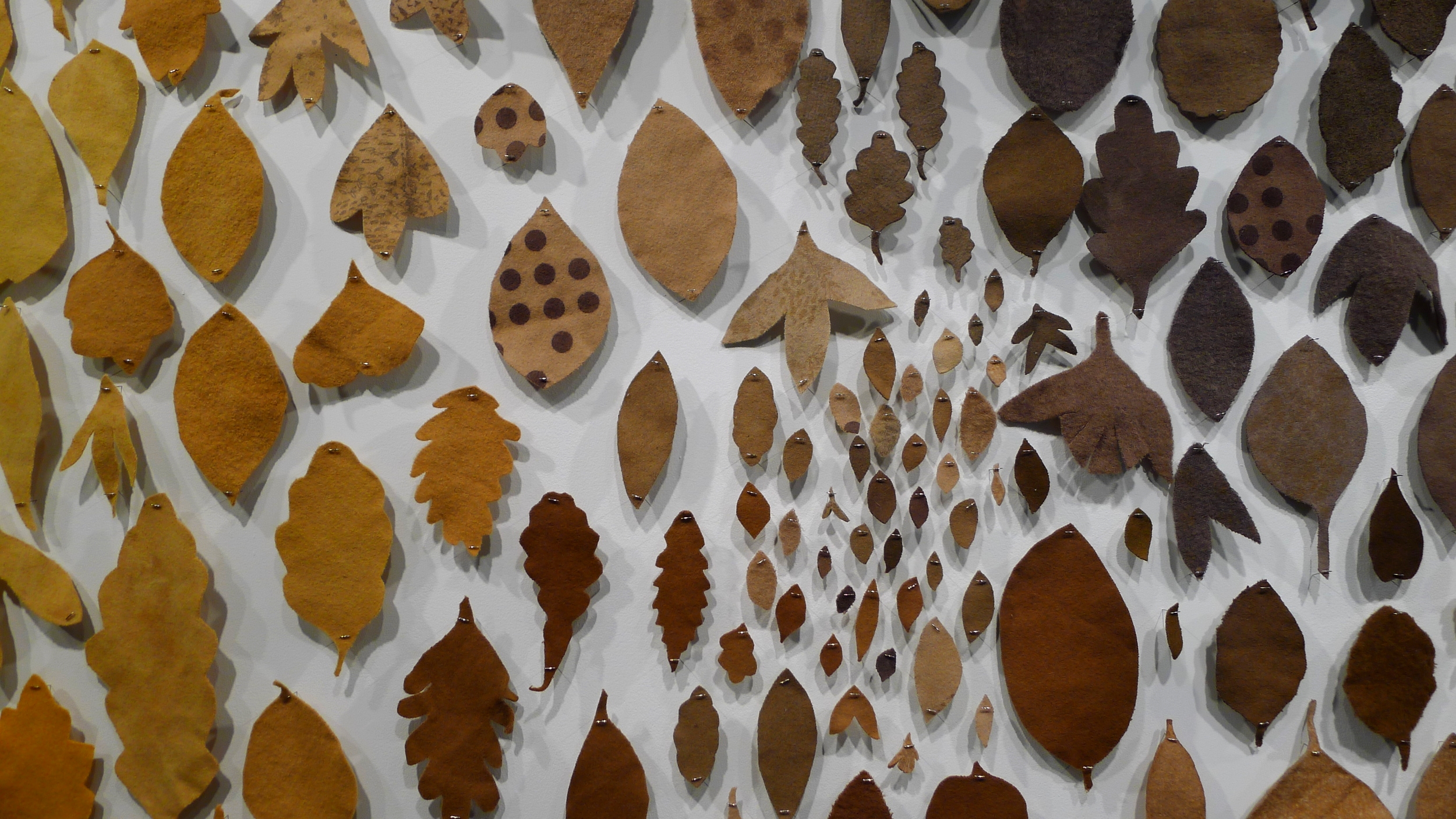
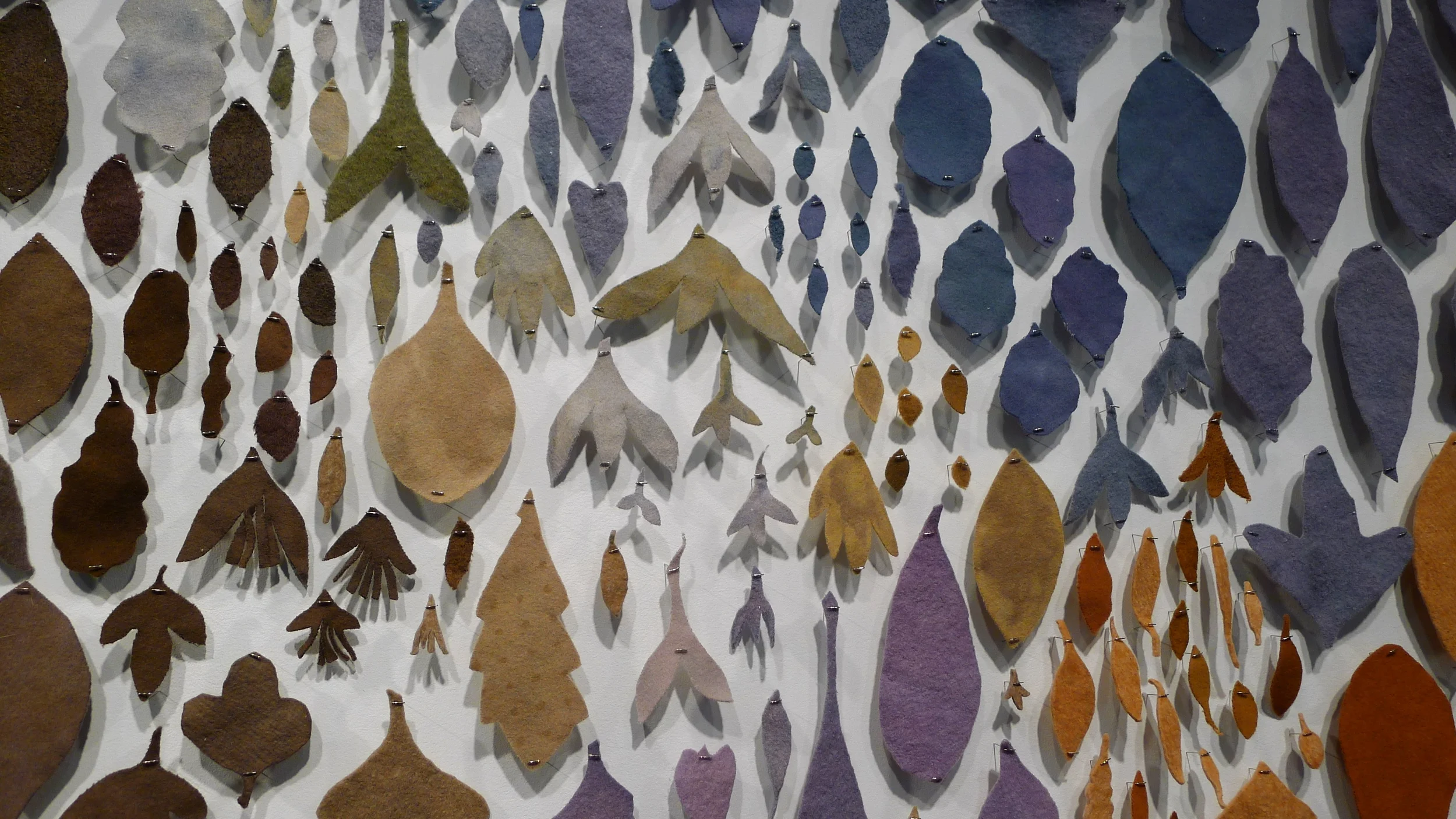
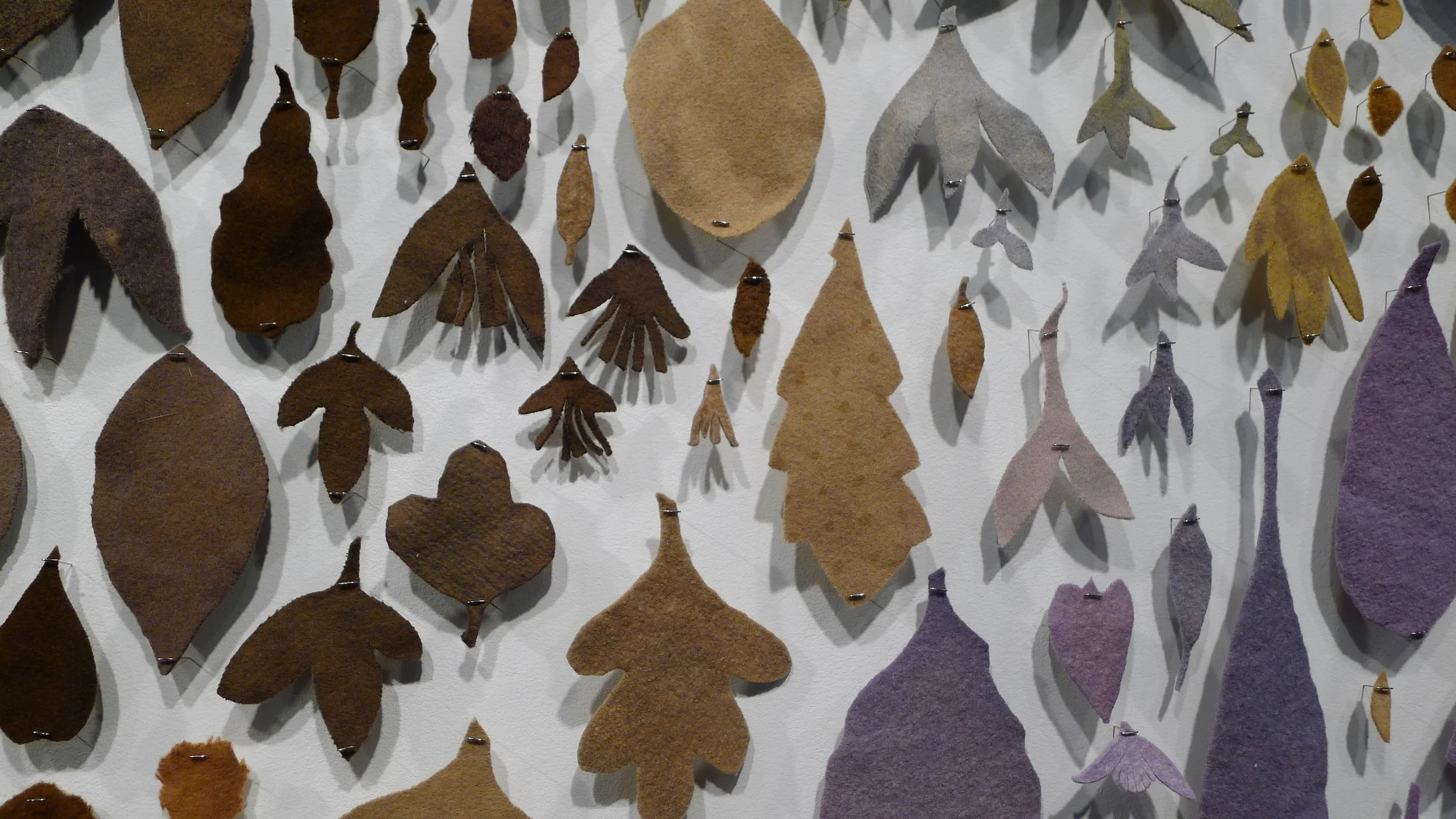
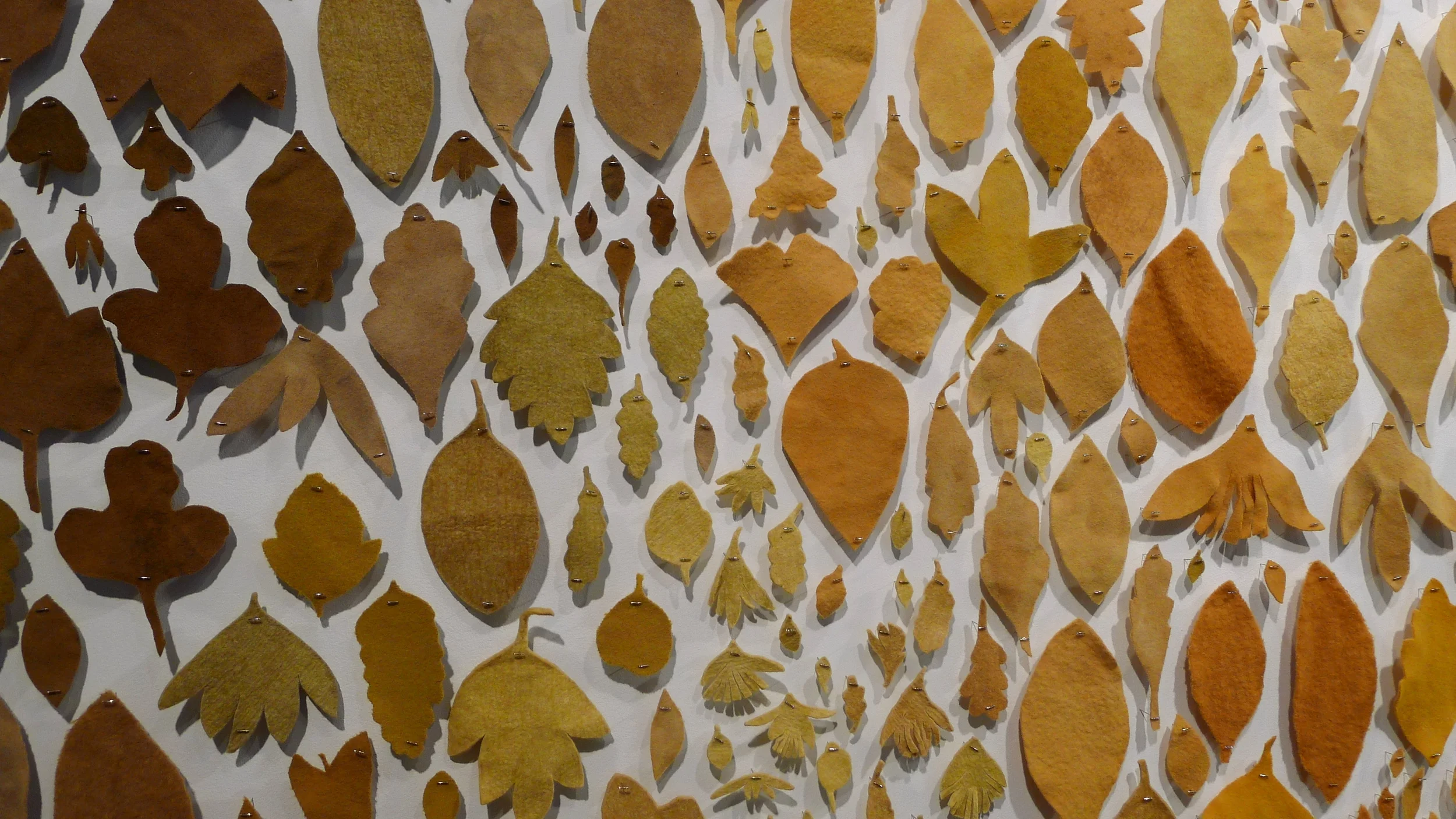


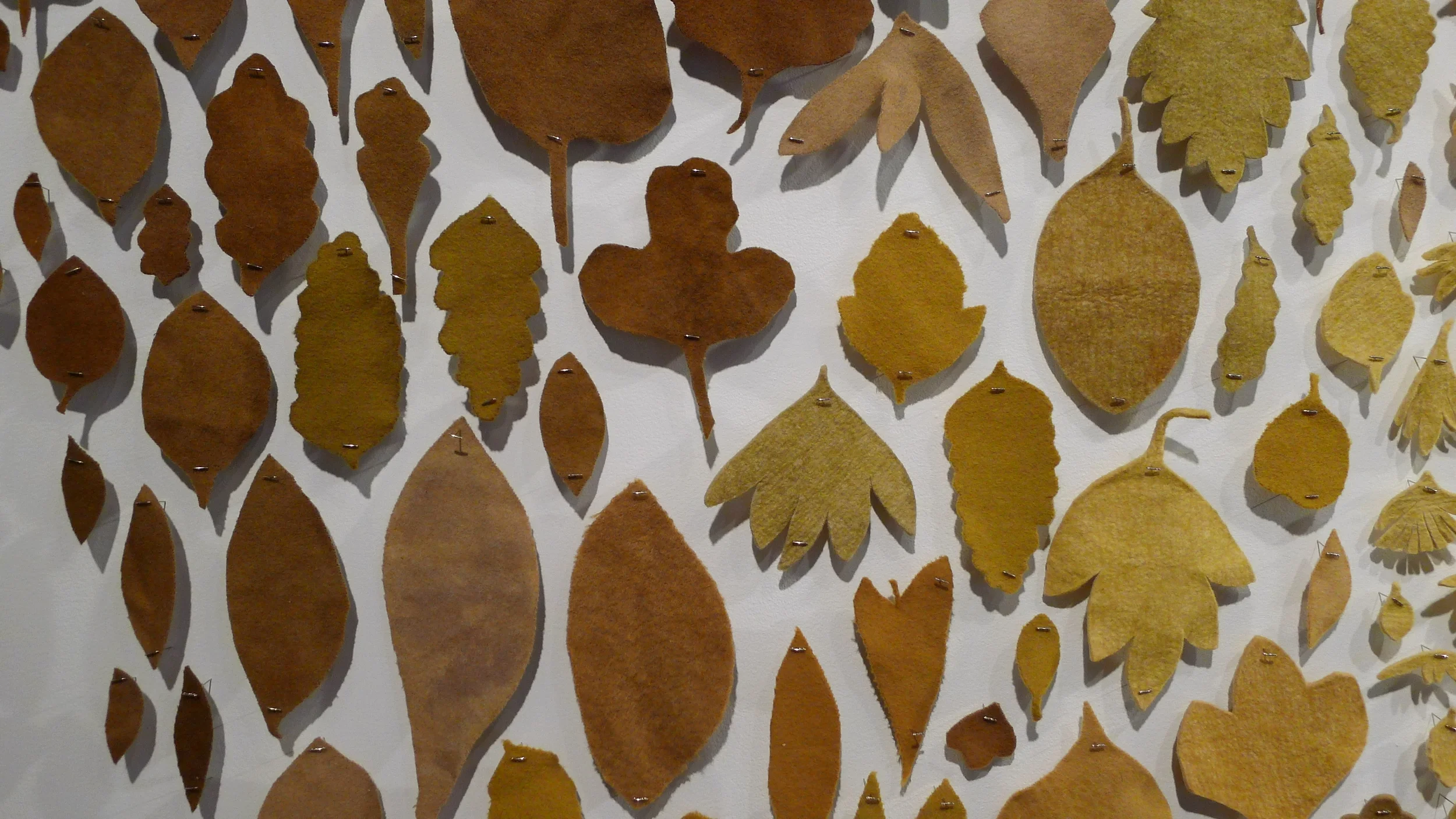


Your Custom Text Here
Part of Forage, York Quay Gallery, Bill Boyle Artport, Harbourfront Centre, September 2015. Natural dyes and hand-cut wool felt.
Foraged Palette
Plants are full of chemicals – healing and harmful, edible and poisonous, stable and volatile – which make them endlessly useful to us. Some species of plants, particularly those that are edible, herbal or medicinal, possess pigment compounds – sources of colourants to dye cloth, make paints or food colouring. These compounds – anthracenes, carotenoids, flavonoids and tannins, found in plants such as onions, carrots, and cabbage – are nutrient rich, and often anti-oxidant. They are also sources of extraordinary colour, manipulable by the simplest schoolroom chemistry experiments. Foraged Palette is created using dyes sourced from food waste such as carrot, cabbage and rhubarb leaf, onion and pomegranate skin, and avocado pits.
Part of Forage, York Quay Gallery, Bill Boyle Artport, Harbourfront Centre, September 2015. Natural dyes and hand-cut wool felt.
Foraged Palette
Plants are full of chemicals – healing and harmful, edible and poisonous, stable and volatile – which make them endlessly useful to us. Some species of plants, particularly those that are edible, herbal or medicinal, possess pigment compounds – sources of colourants to dye cloth, make paints or food colouring. These compounds – anthracenes, carotenoids, flavonoids and tannins, found in plants such as onions, carrots, and cabbage – are nutrient rich, and often anti-oxidant. They are also sources of extraordinary colour, manipulable by the simplest schoolroom chemistry experiments. Foraged Palette is created using dyes sourced from food waste such as carrot, cabbage and rhubarb leaf, onion and pomegranate skin, and avocado pits.